Berlengas Archipelago
The Berlengas are a small archipelago composed of three groups of islands, Berlenga, Estelas and Farilhões. They are located on the Portuguese continental shelf, almost 6 miles (about 10km) from Cabo Carvoeiro.
The Archipelago presents a biological heritage of a high conservation interest, encompassing several reefs, plants, protected habitats and sheltering the nesting of several species of endangered seabirds, such as the cory’s shearwater, the band-rumped storm-petrel, the european shag, the yellow-legged gull, among others.
It has a very vulnerable marine ecosystem, so when you visit the island, pay attention to garbage or objects so that they do not get lost as they are carried away by the tide or left at the mercy of the animals that reside there.
Observation: Some birds have the habit of stealing objects or food. Be careful and you better look over your shoulder.
Gathering factors of great relevance such as the importance of the island in terms of marine birdlife, all its biodiversity, heritage wealth, among other examples, the Berlengas were classified, in 1981, as a Natural Reserve. Almost 20 years later, in 1999, it was classified as a Special Protection Area for Wild Birds and, in 2011, as a UNESCO World Biosphere Reserve.
Berlenga is the only habitable island. Some inhabitants live in the Bairro dos Pescadores (the fishermen’s neighborhood), however, from December to March it is only inhabited by the guards of the Reserva and the lighthouse keepers (at the Duque de Bragança lighthouse).
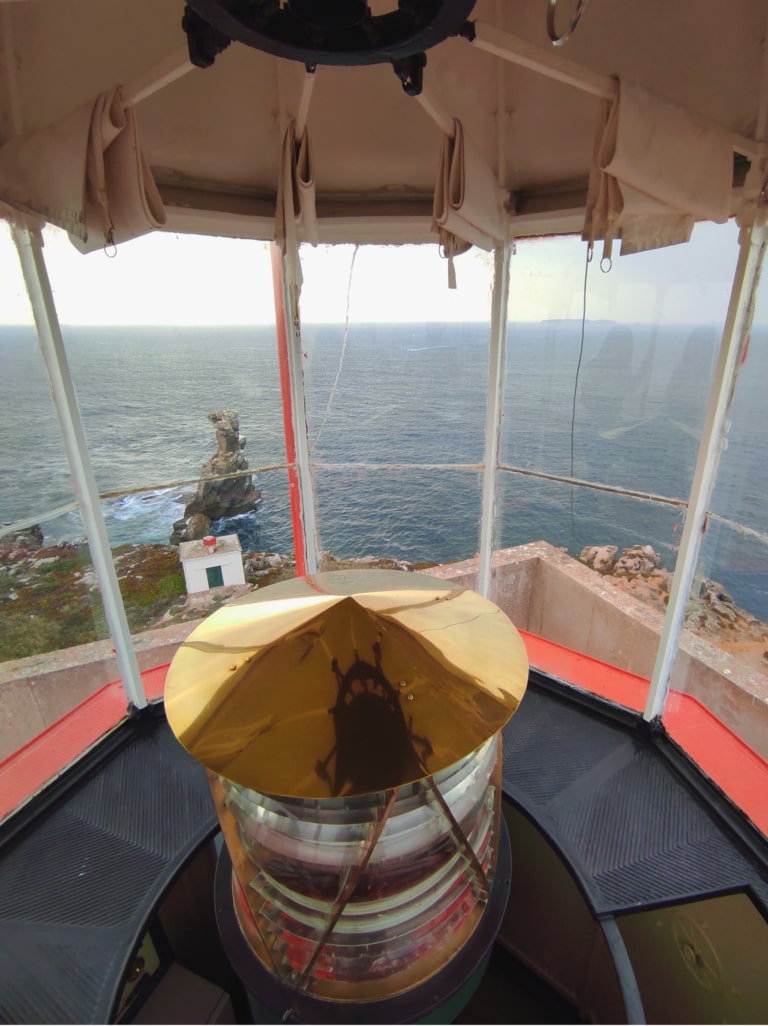
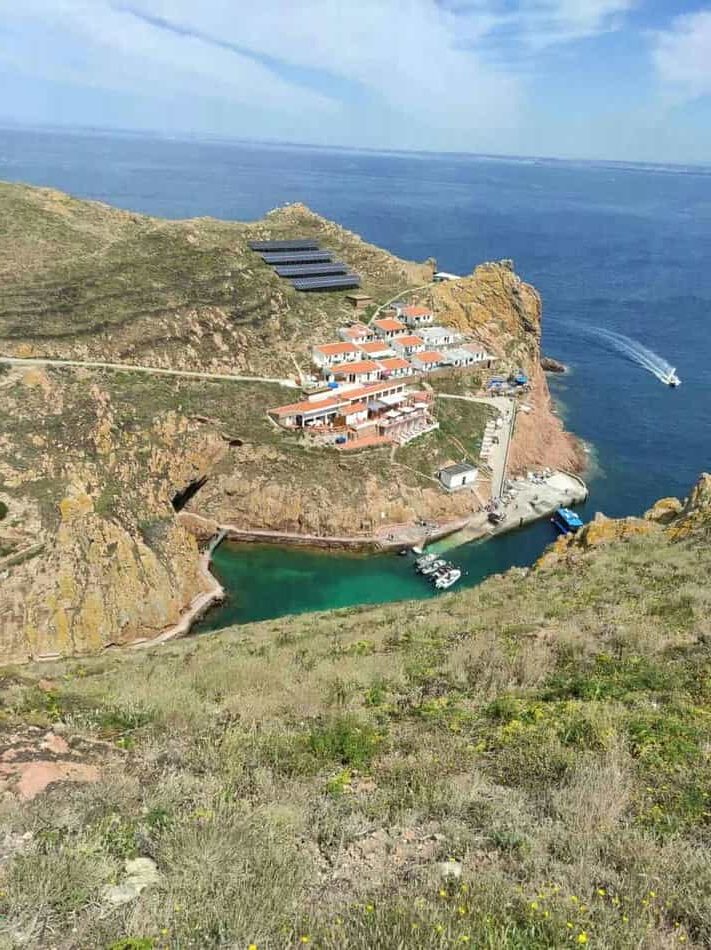
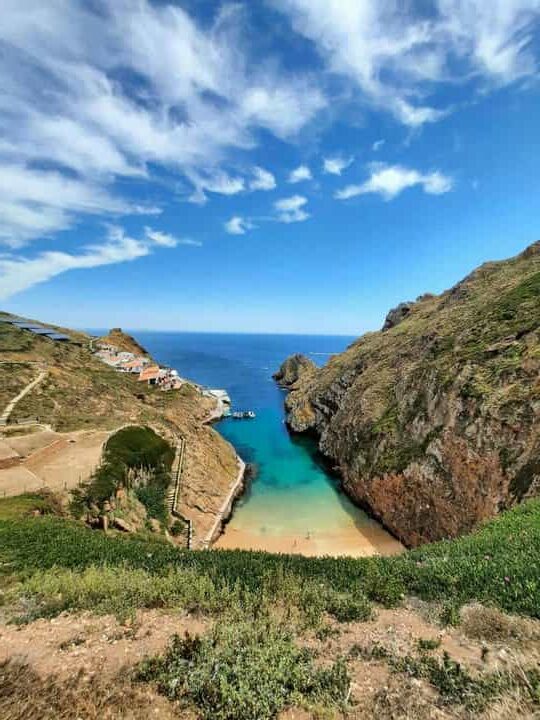
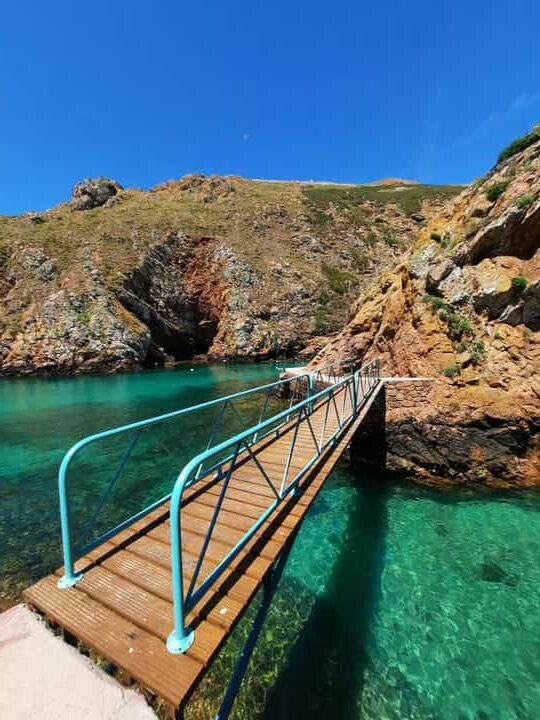

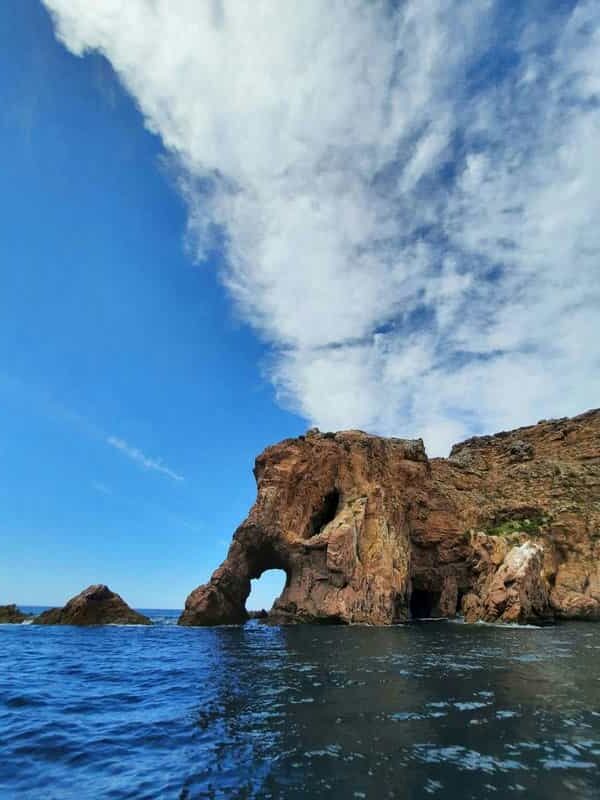
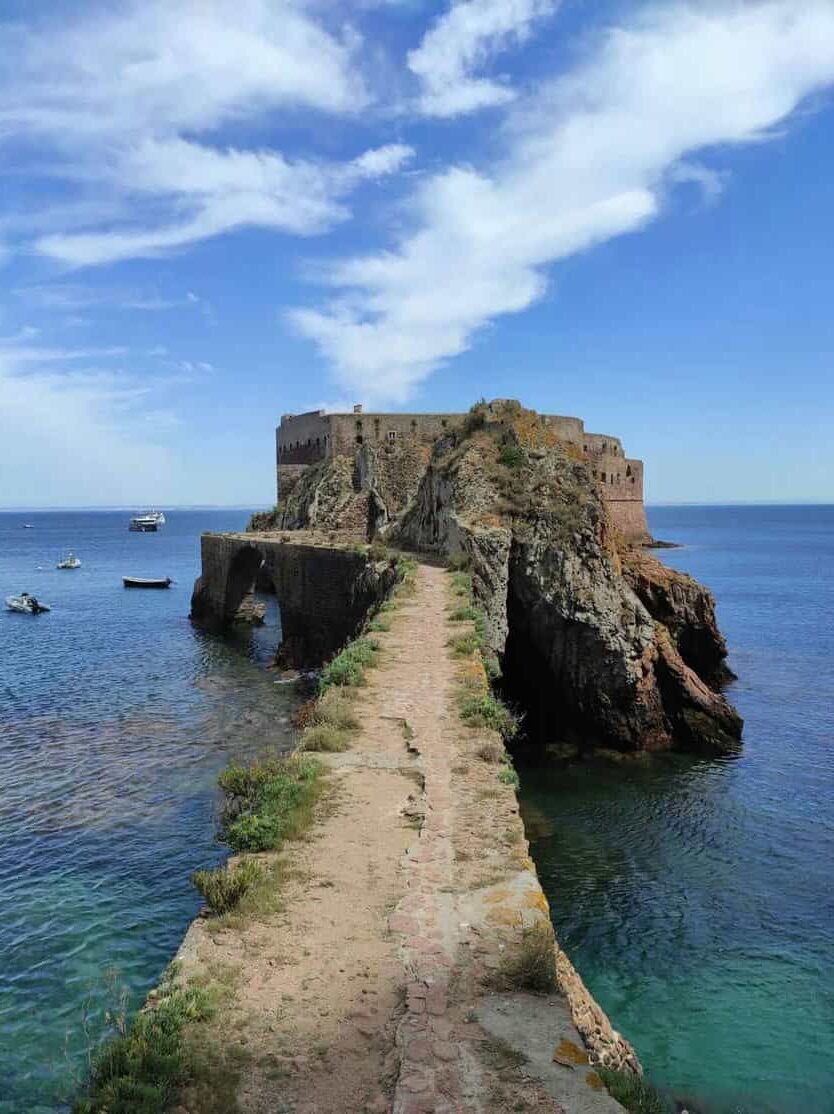
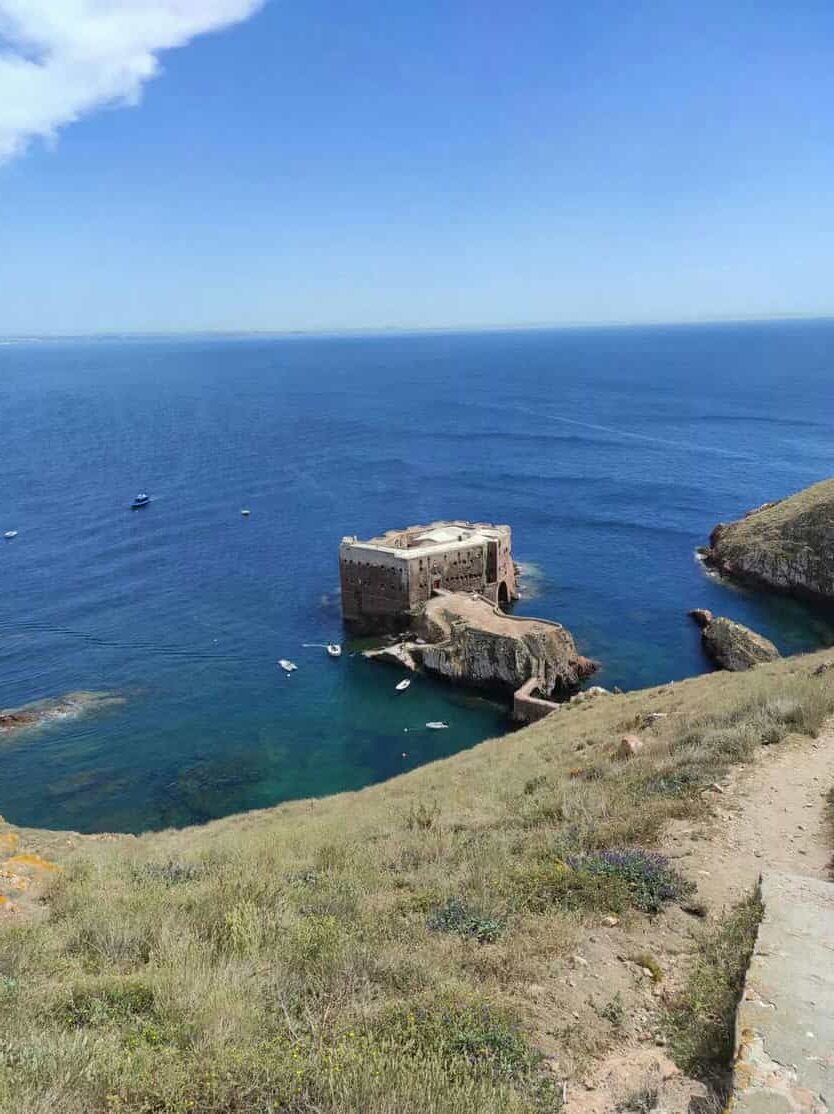
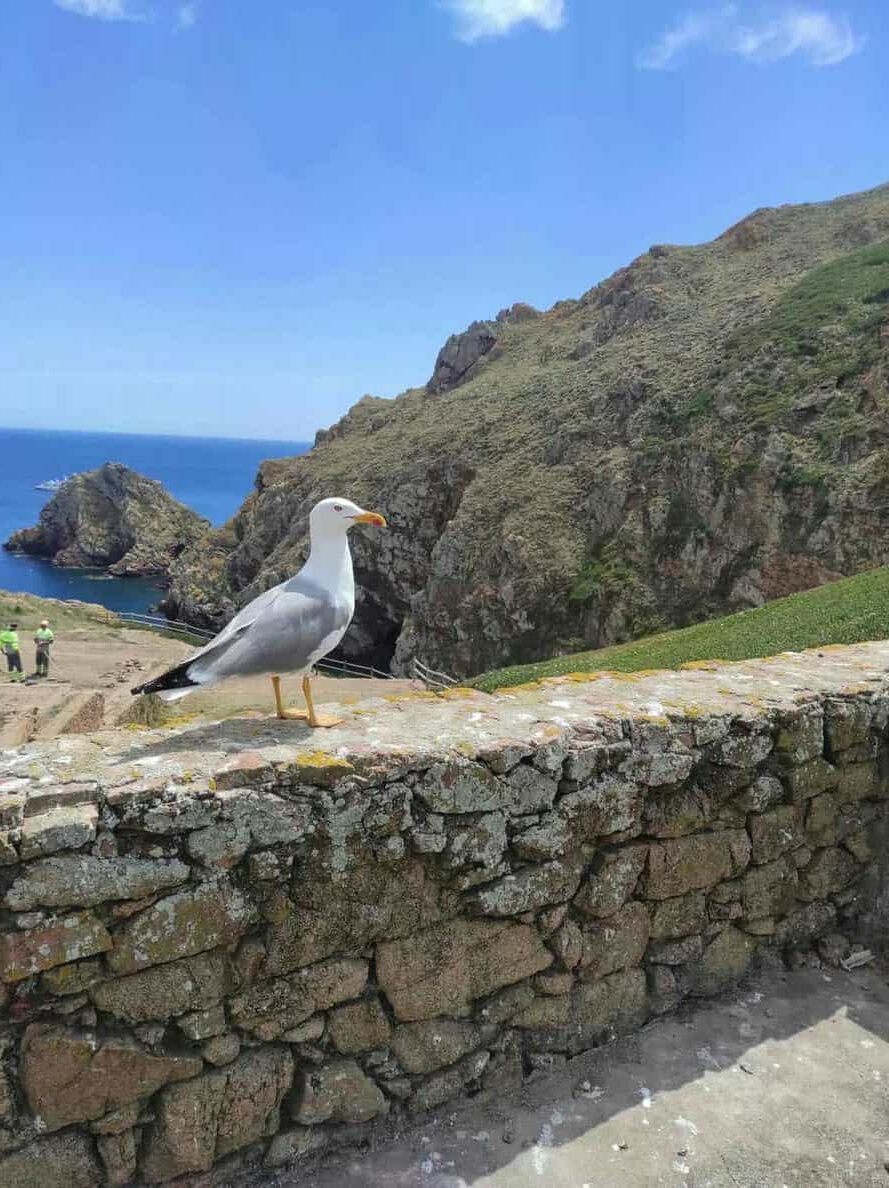
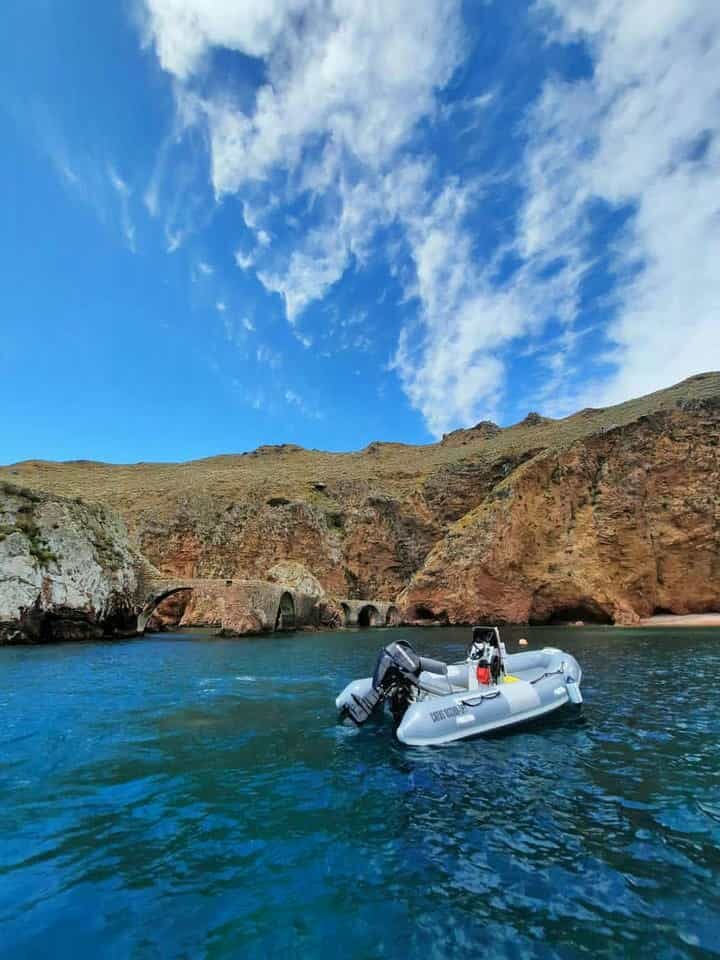
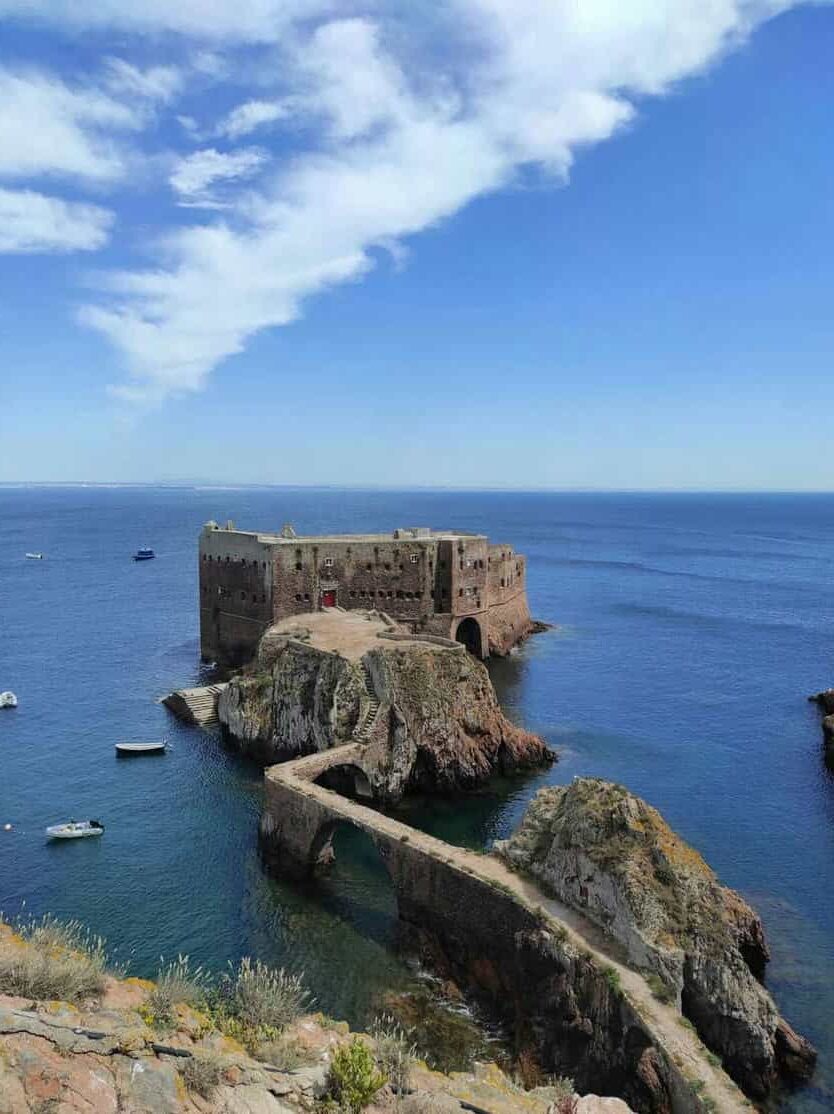
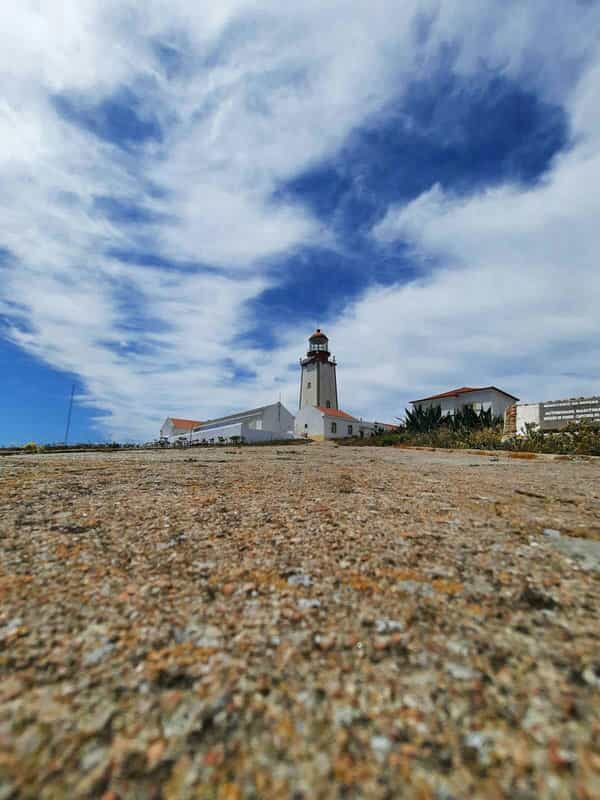
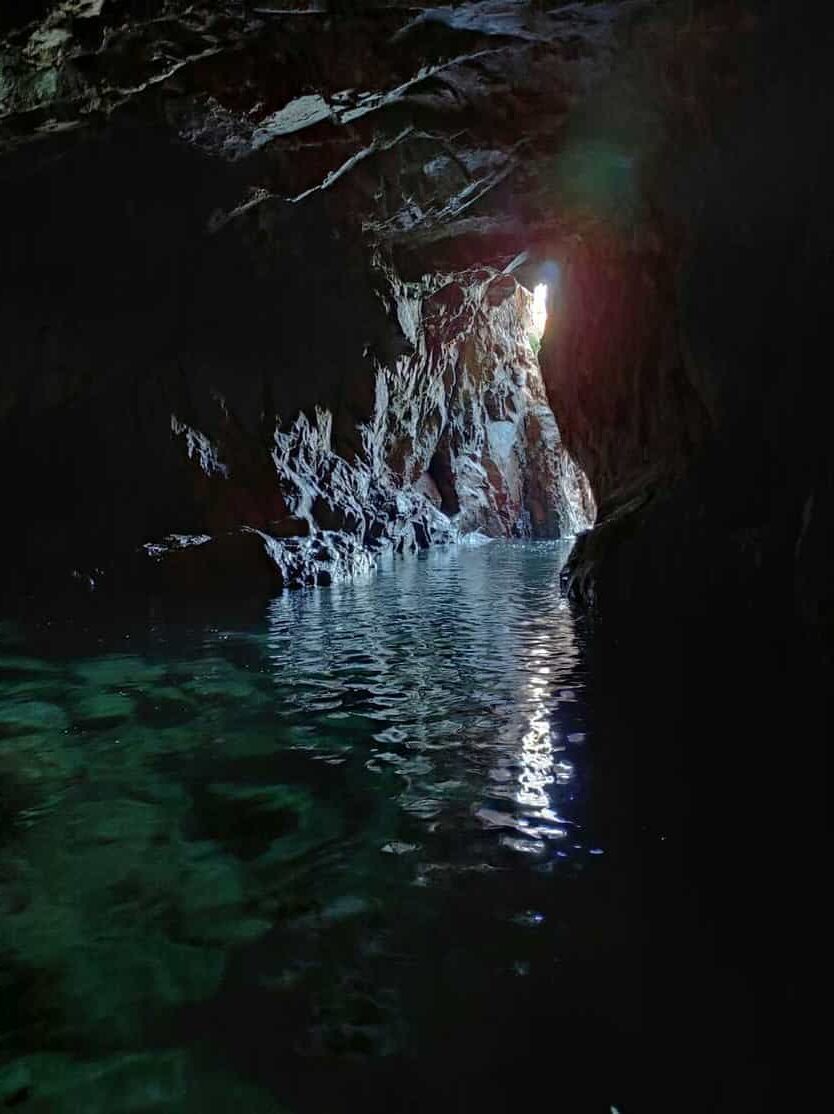
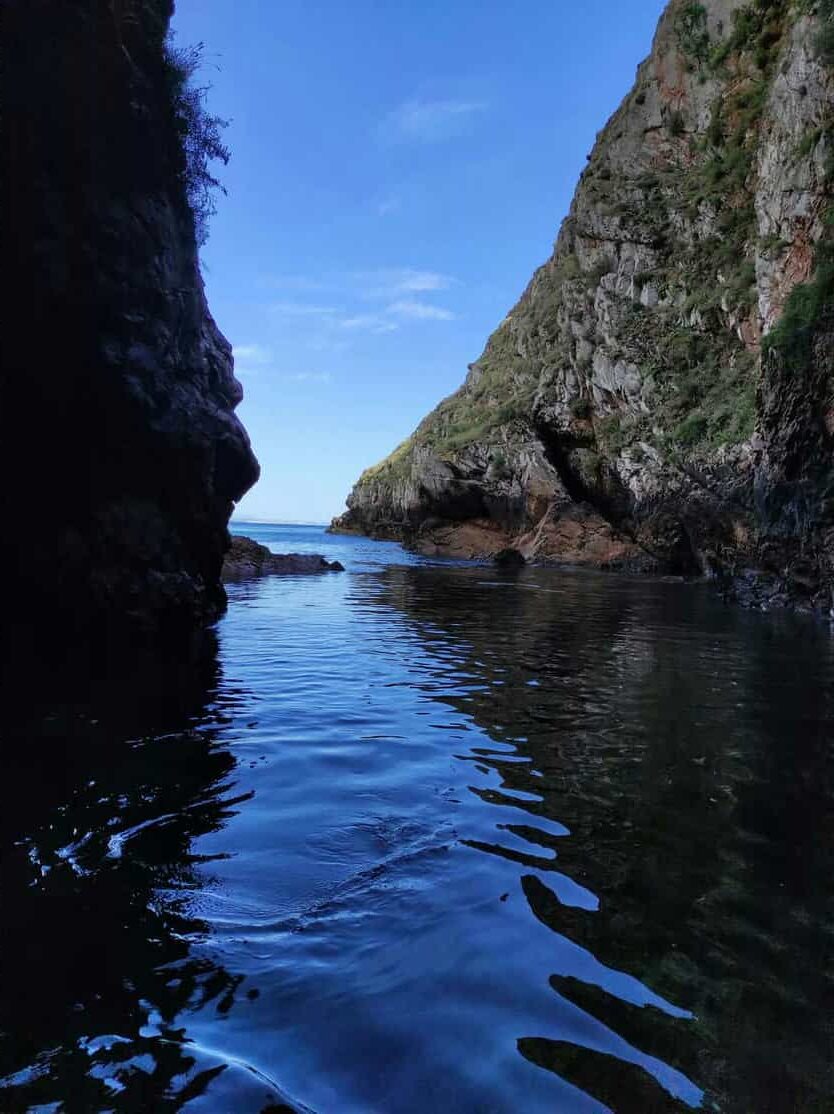
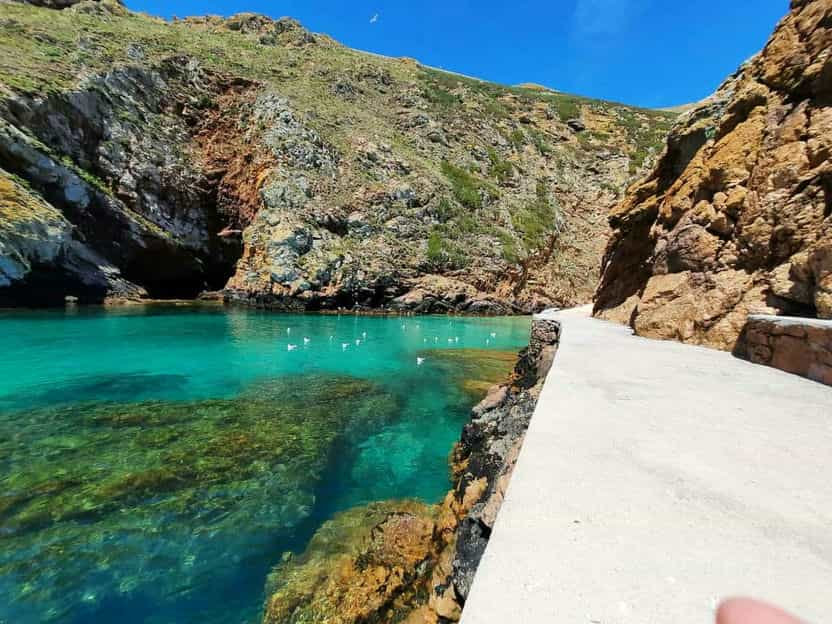
The island can be visited. For this you will have to buy a boat ticket from a travel company to Berlenga. We recommend that you consult all the companies, as they have different timetables and prices. These companies are located in Largo da Ribeira-Velha (you can check it on our map Peniche Guide). You will also have to pay a tourist tax through ICNF (not applicable to residents of Peniche). It is possible to stay overnight on the island, as there is accommodation in the Forte de São João Batista (São João Batista Fort) or in a small hotel next to the Bairro dos Pescadores.
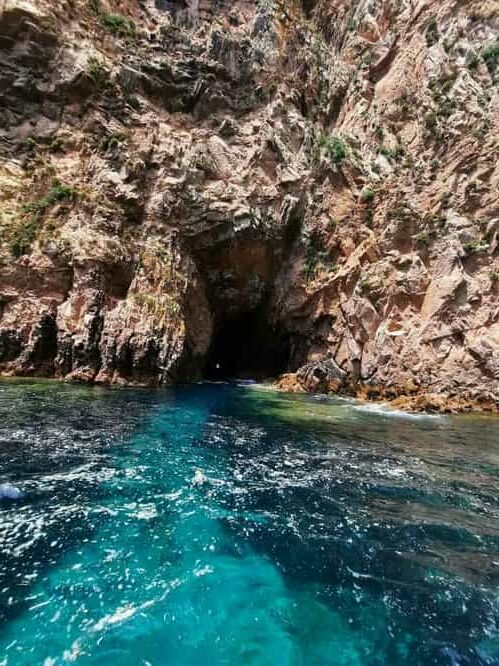

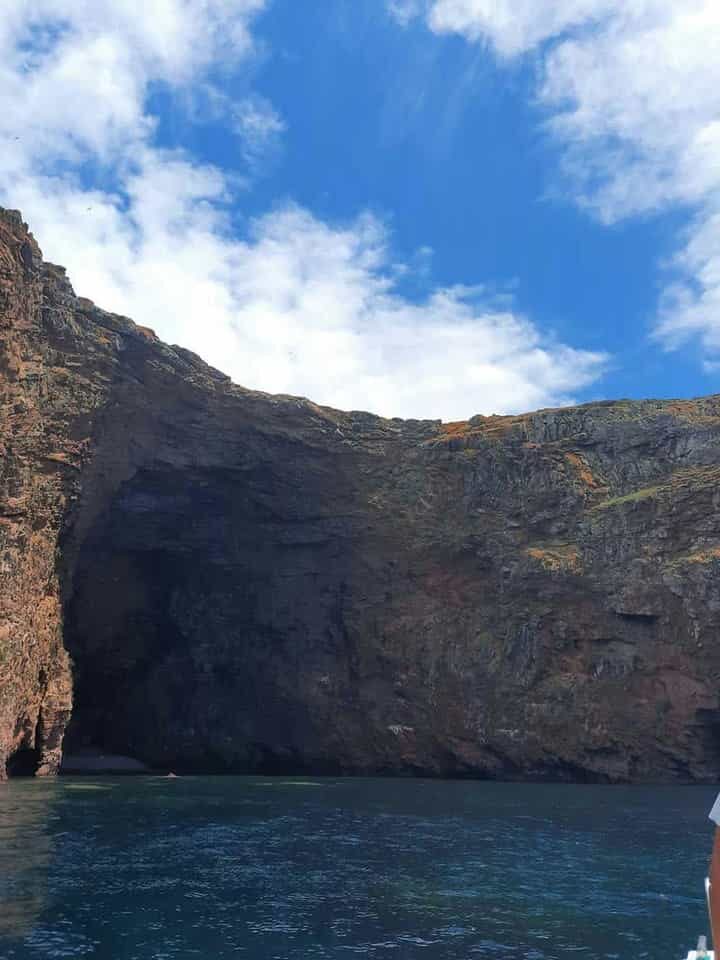
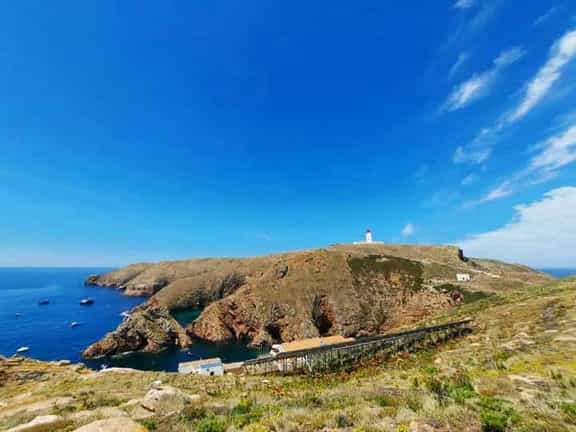
During your visit, you can have lunch or a drink at the hotel’s restaurant or at Castelinho (small cafe/grocery store), in case you don’t want to take food. Always carry cash (there is no ATM or other way to pay in the island).
If you want to do the trails, we recommend you to wear comfortable shoes, but if you just want to go to the beach and have a ride on the glass-bottom boats, a pair of flip-flops will do.
If you do the trails, pay attention to the seagulls (they don’t enjoy having people around that much).
Fact: The Airo Uria Aalgae (a seabird that is very similar to a penguin) was one of the birds inhabiting the island, which unfortunately became extinct in 2002. It was adopted as a symbol of the Reserva Natural (Nature Reserve).
